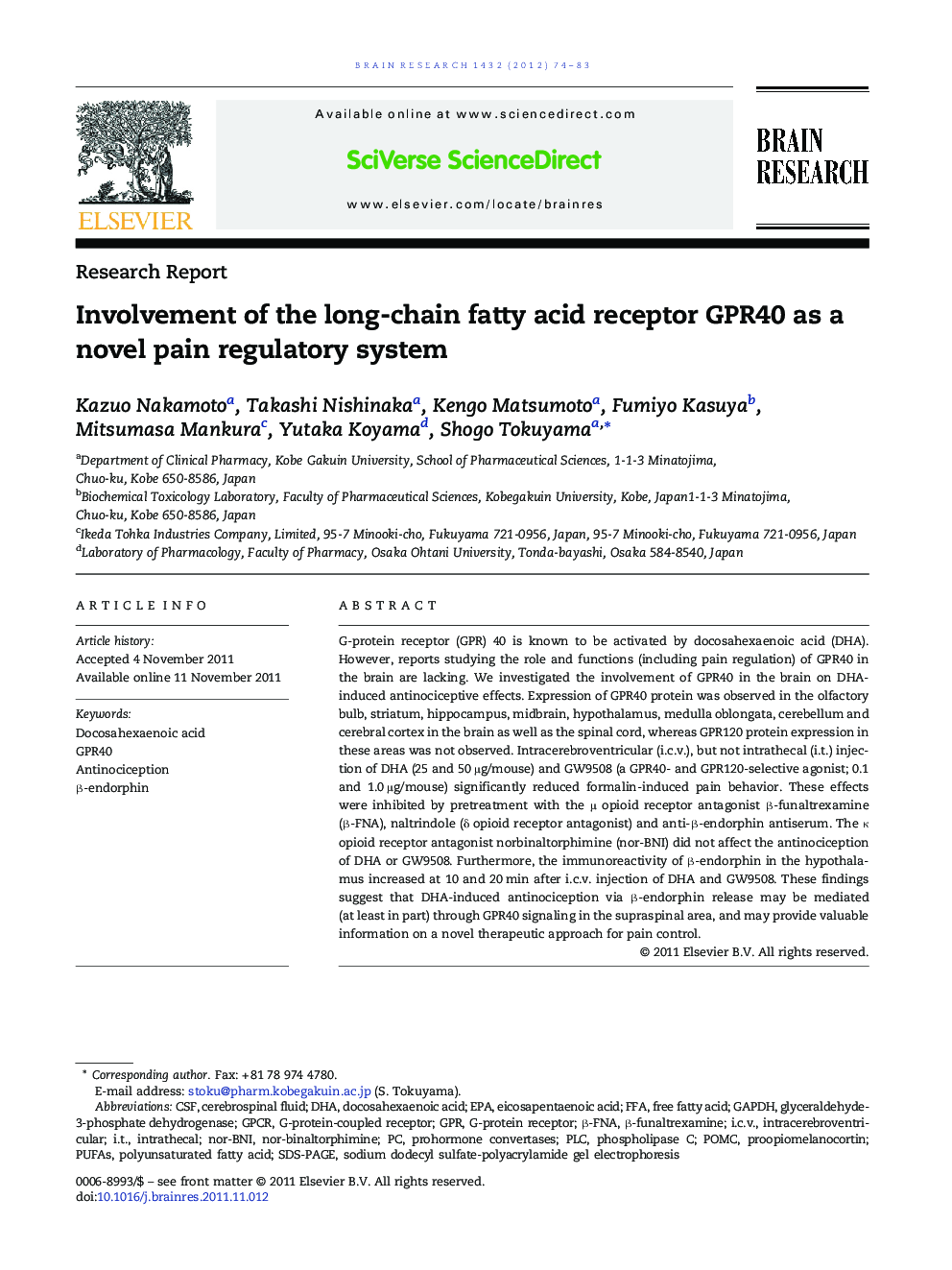| Article ID | Journal | Published Year | Pages | File Type |
|---|---|---|---|---|
| 4325521 | Brain Research | 2012 | 10 Pages |
G-protein receptor (GPR) 40 is known to be activated by docosahexaenoic acid (DHA). However, reports studying the role and functions (including pain regulation) of GPR40 in the brain are lacking. We investigated the involvement of GPR40 in the brain on DHA-induced antinociceptive effects. Expression of GPR40 protein was observed in the olfactory bulb, striatum, hippocampus, midbrain, hypothalamus, medulla oblongata, cerebellum and cerebral cortex in the brain as well as the spinal cord, whereas GPR120 protein expression in these areas was not observed. Intracerebroventricular (i.c.v.), but not intrathecal (i.t.) injection of DHA (25 and 50 μg/mouse) and GW9508 (a GPR40- and GPR120-selective agonist; 0.1 and 1.0 μg/mouse) significantly reduced formalin-induced pain behavior. These effects were inhibited by pretreatment with the μ opioid receptor antagonist β-funaltrexamine (β-FNA), naltrindole (δ opioid receptor antagonist) and anti-β-endorphin antiserum. The κ opioid receptor antagonist norbinaltorphimine (nor-BNI) did not affect the antinociception of DHA or GW9508. Furthermore, the immunoreactivity of β-endorphin in the hypothalamus increased at 10 and 20 min after i.c.v. injection of DHA and GW9508. These findings suggest that DHA-induced antinociception via β-endorphin release may be mediated (at least in part) through GPR40 signaling in the supraspinal area, and may provide valuable information on a novel therapeutic approach for pain control.
► We investigated the involvement of GPR40 on DHA-induced antinociceptive effects. ► GPR40 is known to be activated by long-chain fatty acids such as DHA. ► GPR40 activation induces β-endorphin release and produces antinociceptive effects. ► DHA-induced antinociception via β-endorphin may be mediated through GPR40 signaling.
